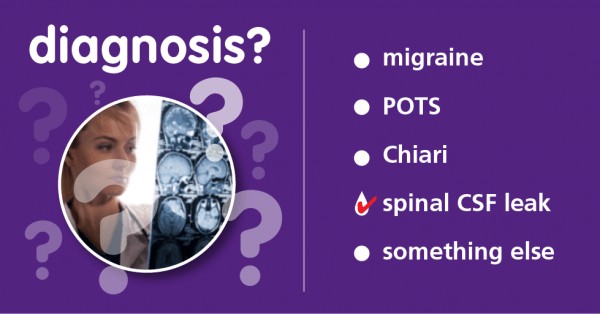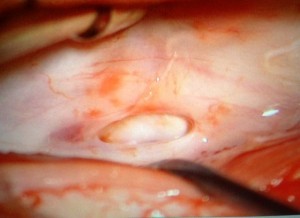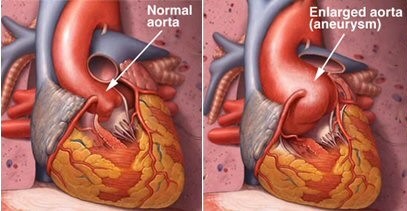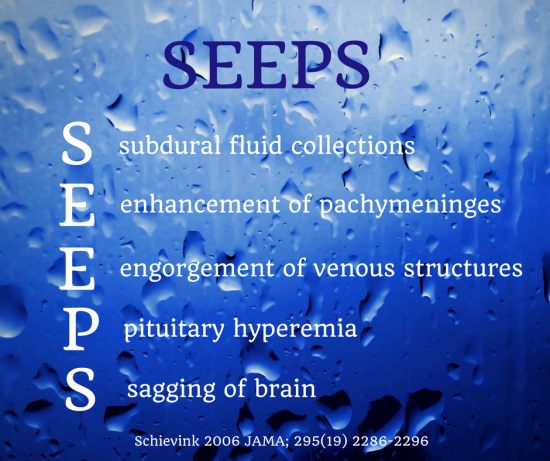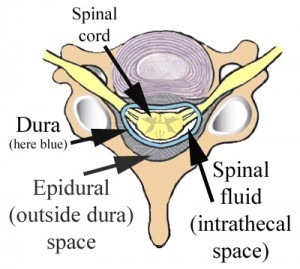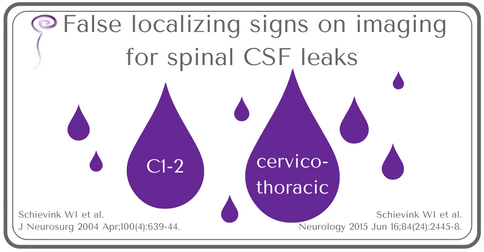Rebound intracranial hypertension (high intracranial pressure) has been described after epidural patching and surgical procedures for intracranial hypotension (low intracranial pressure) resulting from spinal CSF (cerebrospinal fluid) leak. One of the treatments for...
Commentary
Diagnostic challenges in spontaneous intracranial hypotension
Spontaneous intracranial hypotension from spinal CSF leak is an important cause of headache, often quite disabling, that can be cured with treatment. The diagnosis, however, is not always as straightforward as one might imagine. Apart from low familiarity of an...
Deconditioning in spinal CSF leak patients
Many patients with intracranial hypotension from spinal cerebrospinal fluid (CSF) leaks endure a limited ability to be functional while upright. Often much or most of the day is spent recumbent because that is often the only effective way to reduce the positional...
Abnormal Dura in Spontaneous Intracranial Hypotension
Heritable disorders of connective tissue (HDCT) have been identified more frequently in people with spinal CSF leak than in the general population.
Focus on Causes of Intracranial Hypotension
There are several situations in which intracranial hypotension (low CSF volume/pressure in the head) can develop. This is almost always secondary to a CSF leak at the level of the spine. There are 3 main categories. Causes of Intracranial Hypotension: 1. Iatrogenic –...
Do I Need an Echo?
Many cases of spontaneous intracranial hypotension (SIH) (intracranial hypotension = low pressure inside head) due to spinal CSF (cerebrospinal fluid) leak appear to be related to an underlying weakness of the dura, the connective tissue that holds CSF in around the...
What is SEEPS?
This clever mnemonic device helps physicians to remember the findings on cranial (brain) MRI imaging in intracranial hypotension (low CSF volume and pressure in the head) from spinal CSF (cerebrospinal fluid) leaks. ALL patients with suspected intracranial hypotension...
Chiari can be “acquired” from spinal CSF leak
We have previously discussed Chiari mimic in the setting of intracranial hypotension secondary to spinal CSF leak. spinalcsfleak.org/mimic-chiari/ Chiari malformation is congenital, but descent of the cerebellar tonsils can be secondary to other disorders, including...
Brain descent in intracranial hypotension can mimic Chiari
This is Chiari Awareness Month. What is Chiari malformation? In Chiari malformation, the cerebellar tonsils (part of brain) are displaced downwards below the opening at the base of the skull. Up to 3 mm of descent is considered within normal limits; 3-6 mm of descent...
Epidural Steroid Injections: Risk vs Benefit
Serious risks associated with epidural steroid injections, even when rare, must be weighed against the limited potential for benefit.
Positional headache not always a spinal CSF leak
What is a positional headache? The headache associated with intracranial hypotension (low fluid pressure inside the head) secondary to a spinal cerebrospinal fluid (CSF) leak is usually positional—that is, it is head pain that is worse when upright but improved when...
Imaging findings in spinal CSF leaks can be misleading
The initial treatment of spontaneous spinal cerebrospinal fluid (CSF) leaks does not require localization of the CSF leak with spinal imaging, since one or more non-directed epidural blood patches are often effective. In those situations where conservative measures or...


